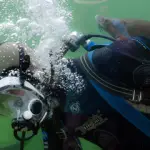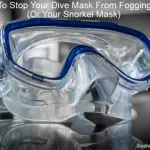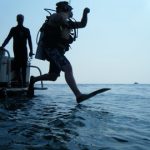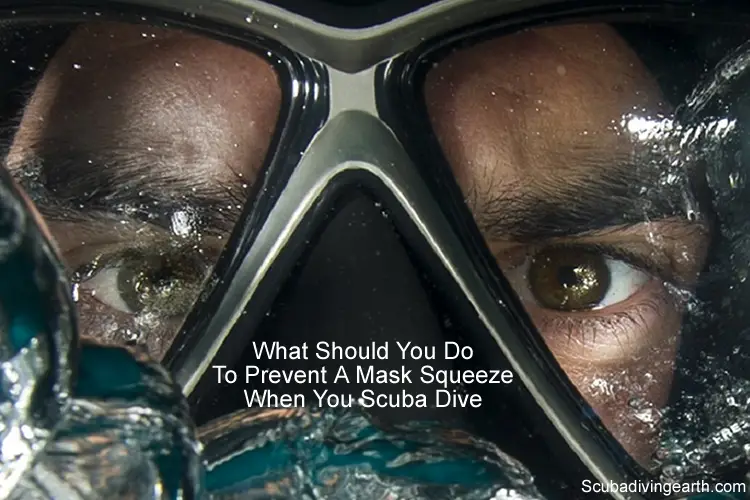
Mask squeeze advice: What you must do to prevent a mask squeeze when you scuba dive
When you first learn to scuba dive, the skills you need can be a bit overwhelming. Which is why sometimes beginner scuba divers get mask squeeze when they first start diving. Mask squeeze is more of an embarrassment than it is dangerous, but it is something you should prevent.
So how to prevent mask squeeze? To easily prevent mask squeeze, gently exhale from your nose every few feet as you descend. Breathing out from your nose will equalise the airspace inside your mask to the same pressure outside your mask. Mask squeeze is most likely to happen during the first 10 metres (33 feet) of your descent.
The best way to dive anywhere in the world and to practice your scuba diving skills is by a scuba diving liveaboard. You can check the latest and best deals on liveaboards using the following window:
What is a mask squeeze?
Mask squeeze (face squeeze) is when a scuba diver fails to equalise the pressure of the airspace inside their mask. The affect of the mask squeeze is to cause a facial and eye barotrauma, or bruising of the skin and eyes.
Mask squeeze or eye barotrauma occurs during the decent. As scuba divers descend, the water pressure increases. The air spaces in your body and equipment gets squeezed, which in this case is the air space inside your mask. This is Boyles Law in action.
The change in pressure is most noticeable in the first 10 metres (33 feet) of your dive. But water pressure continues to increase the deeper you go. Which means you should continue to equalise the air pressure in your mask for your whole descent.
How to prevent a mask squeeze
Mask squeeze is very easy to prevent. The easiest way to prevent mask squeeze is to gently exhale through your nostrils every few feet as you descend.
This will equalise the air inside your mask to the same pressure as it is outside your mask. It doesn’t matter if you over-exhale, as the excess air will spill out around the sides of the mask.
When you’re new to the sport there’s so much to remember.
This includes:
- Remembering to breathe normally.
- Remembering your buoyancy control.
- Equalising and clearing your ears.
- The excitement of the dive is a distraction in itself.
- Newbies can also be distracted by nerves too.
The important difference between mask squeeze and ear squeeze is there’s no pain with mask squeeze. Ear squeeze can be very painful.
It’s difficult to forget to equalise your ears, as the pain will prompt you. But you don’t have the same pain when it comes to mask squeeze. Which is why it’s easy to forget.
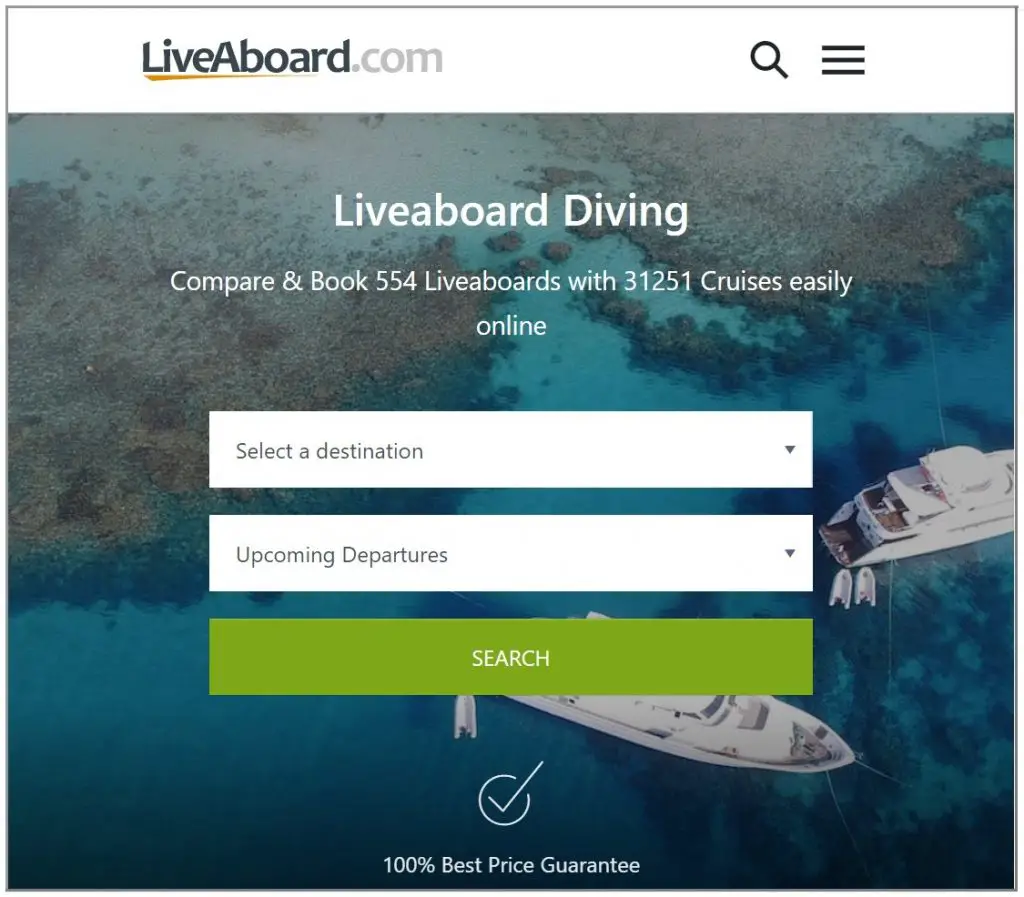
Pro tips to prevent the risk of a mask squeeze or eye and face barotrauma
A few more pro tips to prevent mask squeeze:
- Pay attention and don’t dive if you’re tired or sleepy.
- Avoid drinking excessive alcohol the night before. A hangover will impair your thinking so you’re more likely to forget to equalise your mask.
- Don’t over-tighten your mask strap as this will make it more difficult to equalise the airspace.
- Don’t descend too fast as this will increase the risk of getting mask squeeze.
What are the symptoms of a mask squeeze?
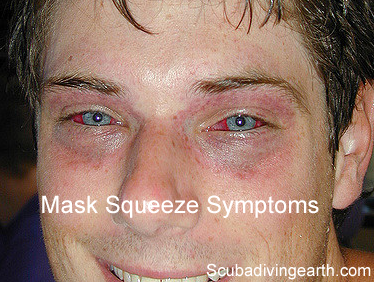
- Reds eyes or face: The whites of your eyes can be blood shot or can be worse with larger visible blood spots on the surface of the whites of the eye. This is known as a sub-conjunctival hemorrhage.
- Facial bruising and skin redness: Know as ecchymosis of the skin or bruising, which looks like you’ve been punched in the eyes. But it can also look like a rash around the eyes.
- Eye pain or visual disturbances: This can include blurred vision or a loss of a part of your field of vision (these symptoms are rare). If you experience this symptom you should consult your doctor.
- Nosebleed. The inside of your nose is delicate and nosebleeds can happen due to the vacuum inside the mask space.
How is mask squeeze treated?
The vast majority of mask squeeze injuries require no treatment at all, but you may want to place an ice pack or a cold wet towel over your eyes help relieve the bruising. Take mild painkillers to help ease any pain you may suffer as a result.
For more severe cases of mask squeeze may need to be evaluated by a doctor.
Can you dive with mask squeeze?
To be really safe you should not dive after suffering from mask squeeze. This may be especially annoying if you’ve got mask squeeze on your first dive of the day. But you are better safe than sorry. At least this will be an important lesson learned.
If in doubt you should seek medical advice about your symptoms and whether or not you should dive.
What is the mask squeeze healing time?
A facial barotrauma, which is essentially a bruising of the skin or eyes, takes time for the body to heal. The mask squeeze healing process is usually around two weeks for the bruising to clear completely.
The healing process is the time it takes for your body to re-absorb the blood that’s been brought to the surface.
Unfortunately the affects of a mask squeeze makes you look like you have black eyes from a fight in ring with a boxer.
If in the unlikely event you are suffering from any pain as a result of a mask squeeze in your eyes, it’s recommended to consult an eye specialist straight away.
Can you get mask squeeze when snorkeling or freediving?
If you dive down deep enough when snorkeling it’s possible to get mask squeeze, but unlikely. But if you bear in mind the biggest pressure increase is in the first 10 metres (33 feet) of water, it is entirely possible. Although mask squeeze is more likely if you’re freediving.
For mask squeeze to happen when you’re snorkelling, your dives would have to be quite deep to create the pressure difference necessary to cause mask squeeze. Which is why free divers are more at risk of getting mask squeeze.
Other dive squeezes to avoid
Ear squeeze
Ear squeeze when scuba diving is the adverse effects of the build up of a pressure difference between the outer ear and the middle ear. To avoid ear squeeze when scuba diving, divers simply squeeze their nose and exhale though their nostrils.
Performing this action equalises the pressure between the middle ear and the back of the throat via the Eustachian tube. This will then be the same as the outer ear pressure too.
Tooth squeeze
Some times scuba divers have small pockets of air inside their teeth. Tooth squeeze or aerodontalgia normally occurs beneath the filling of a tooth. This can cause pain for divers and can be treated by a dentist.
Unfortunately, and unlike the other squeezes discussed in this article, tooth squeeze cannot be affected by the diver.
Sinus squeeze
Inside our heads we have many small air spaces which are referred to as sinuses. As with any air space, the sinuses are no different and will be affected by the pressure exerted on a scuba diver during a dive.
Symptoms of sinus squeeze include a feeling of pressure or pain in the head. This pressure or pain can include the area around your eyes, cheeks and forehead. Sinus squeeze can lead to bleeding too.
Often divers surface with blood in their masks as a result of sinus squeeze. Blood in your mask is more likely to happen on deeper dives though. This is in most instances nothing to worry about too. However, if you’re worried always consult a doctor.
Scuba diving can improve sinus problems over time. So at the the start you may have sinus pain and even experience the blood in your mask, but with more diving these symptoms will disappear.
I hope you enjoyed this article about how to prevent mask squeeze
I’d love to hear from you. Tell us about your adventures of diving and snorkeling, in the comments below. Please also share your photos. Either from your underwater cameras or videos from your waterproof Gopro’s!
If this article hasn’t answered all of your questions. If you have more questions either about snorkeling or scuba diving (or specifically about how to prevent mask squeeze), please comment below with your questions.
There will also be many more articles about scuba diving (and snorkeling) for you to read and learn about these fabulous sports.
Have fun and be safe!
#ScubaMaskSqueeze


